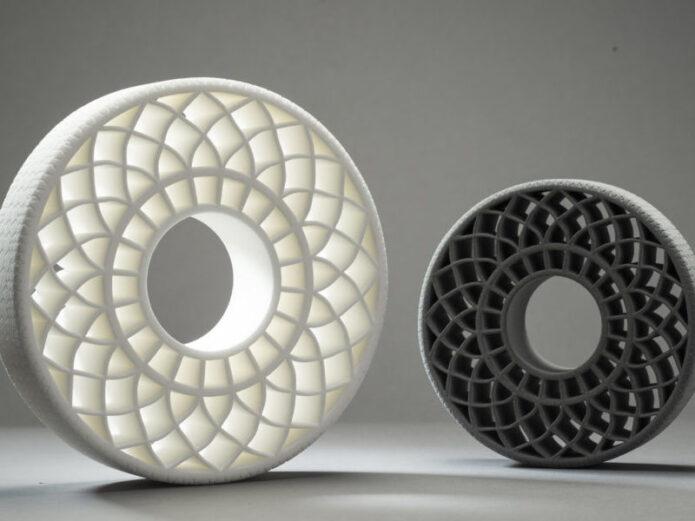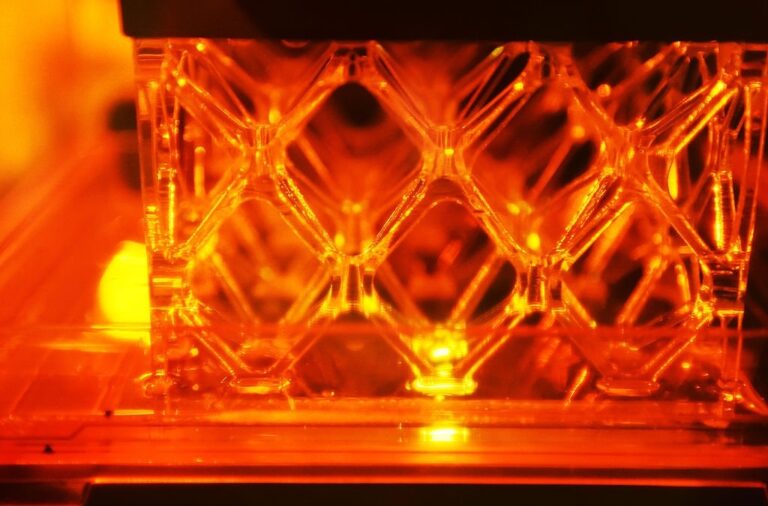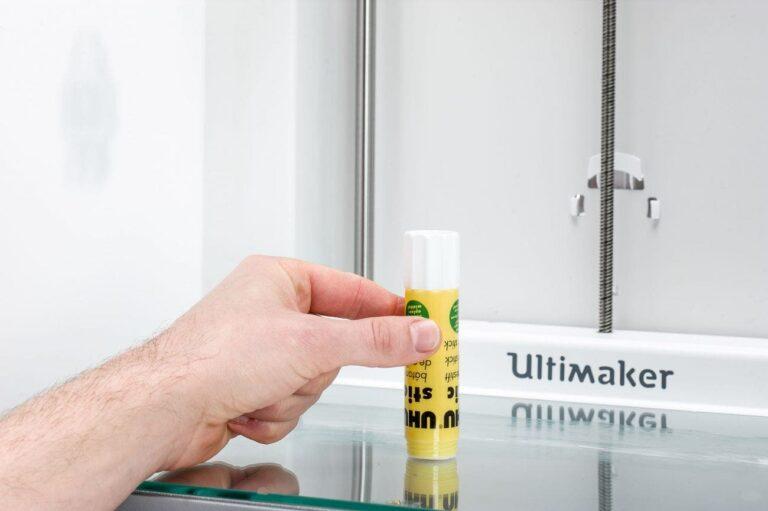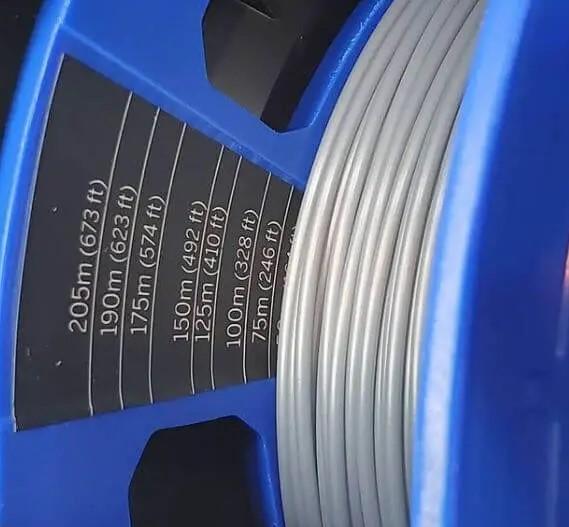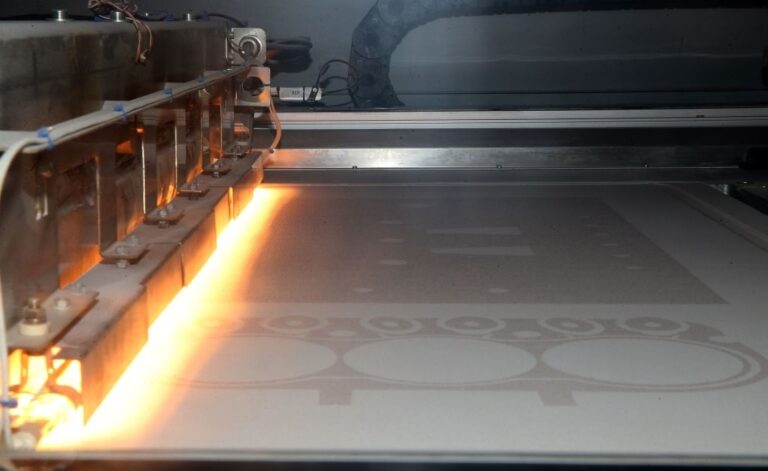The Ultimate Guide to 3D Printing with Wood PLA Filament
Introduction
Start a Journey with Wood PLA Filament in the Introductory
The “Ultimate Guide to 3D Printing with Wood PLA Filament” is here. You’ve arrived at the right place if you’ve ever wondered how to use this unusual material in your 3D printing projects or are looking for strategies to improve your creative output. With the knowledge, advice, and skills you get from this thorough tutorial, you should be able to master the art of 3D printing with Wood PLA Filament.
In this article, we will examine Wood PLA Filament and its advantages for 3D printing. We’ll go into detail about choosing the best filament, setting up your printer and workspace, and adjusting print parameters for the best outcomes. Together with a variety of imaginative applications and project ideas to inspire you, you will also learn about post-processing procedures to give your prints a professional appearance.
You will have learned important tips and useful information about using Wood PLA Filament to print properly after reading this guide. This blog post will give you the tools and knowledge you need to produce beautiful prints using Wood PLA Filament, regardless of your level of 3D printing expertise or where you are in your journey. So let’s go off on this thrilling voyage together and let your imagination flow!
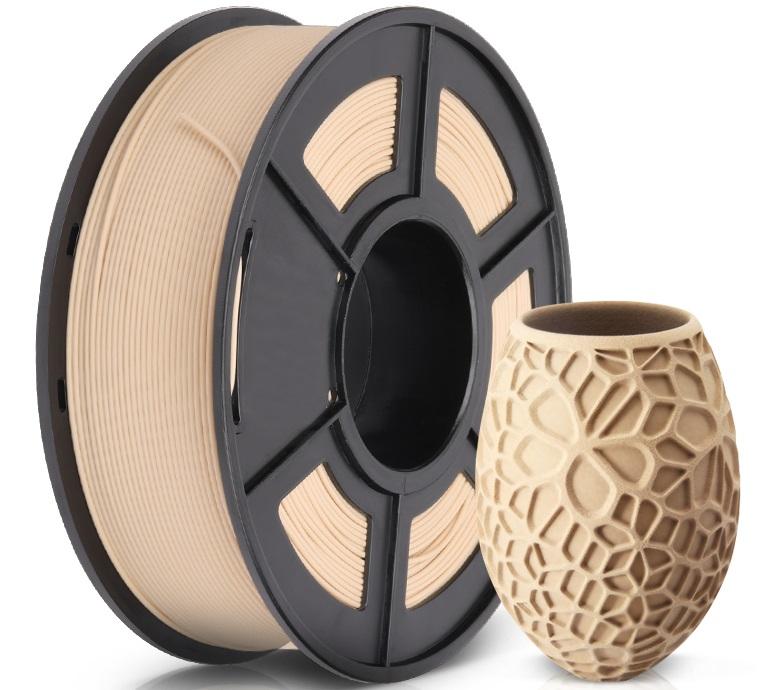
Introduction to Wood PLA Filament
Welcome to the world of a revolutionary and distinctive material that is transforming the 3D printing sector! In this section, we will examine the fundamentals of this remarkable filament, as well as its many advantages for use in 3D printing.
What is Wood PLA Filament?
This cutting-edge filament is a composite material made of conventional PLA (polylactic acid) plus fibers from real wood. As a result, the material keeps PLA’s user-friendliness and green attributes while still having a look and feel similar to real wood. For 3D printing enthusiasts, this combination of materials opens up new possibilities and makes it simple to produce amazing prints that look like wood.
Benefits of using Wood PLA Filament in 3D Printing
Using this special filament in your 3D printing designs has many advantages. First and foremost, it provides a wood-like, natural appearance that gives your prints a feeling of warmth and authenticity. This substance is also robust and lightweight, making it ideal for a variety of applications.
Also, the majority of FDM 3D printers can use this cutting-edge filament, making it simple for users of all skill levels to adopt. Also, because of its PLA basis, it continues to be a biodegradable and environmentally responsible choice.
Last but not least, this substance enables simple post-processing, allowing users to sand, stain, and paint their prints just like they would with actual wood. You have countless potential to improve your 3D printing projects because of this adaptability, which offers up a world of creative possibilities.
In conclusion, this remarkable filament provides a rare fusion of aesthetics, usability, and simplicity. Keep tuned as we explore deeper into the fascinating world of 3D printing with this cutting-edge material, assisting you on your quest to produce stunning prints that resemble wood.
Selecting the Right Wood PLA Filament
Selecting the right filament for your 3D printing project can make all the difference in the final result. In this section, we will walk you through the criteria to take into account when selecting the ideal filament and talk about some of the well-known brands and varieties on the market.
Factors to consider when choosing Wood PLA Filament
A few crucial aspects must be taken into account while selecting the ideal filament for your project. First, think about the desired appearance of your final print, as different blends of filament can produce varying wood-like effects. Additionally, consider the strength and flexibility required for your specific application.
Another crucial factor is compatibility with your 3D printer. Ensure that the filament you select is suitable for your printer’s specifications and settings. Also, take into account how your decision may affect the environment, as some solutions might be more environmentally friendly than others.
Furthermore, keep taking mind that the price of filament might vary significantly depending on the brand and type.
Popular brands and types of Wood PLA Filament
There are numerous brands and types of filament available, catering to a wide range of preferences and requirements. Some popular brands include Hatchbox, ColorFabb, and eSUN, all of which offer their own unique blends of filament.
Hatchbox, for instance, is known for its consistent quality and a variety of wood-like options, while ColorFabb offers a premium, high-quality filament called WoodFill, which is designed to create stunning, realistic prints. On the other hand, eSUN provides a more budget-friendly option with its PLA+ line, which includes a wood-like filament.
In conclusion, selecting the right filament is crucial for achieving the best results in your 3D printing projects. By considering the factors mentioned above and exploring various brands and types, you can find the perfect filament to bring your creative ideas to life.
Preparing for 3D Printing with Wood PLA Filament
Proper preparation is key to achieving successful prints with this unique filament. In this section, we’ll walk you through the essential steps to set up your 3D printer and workspace, ensuring that you’re ready to create beautiful, wood-like prints with ease.
Printer settings and adjustments for Wood PLA Filament
Before diving into 3D printing, it’s important to fine-tune your printer settings for the best results. First, adjust the print temperature, as this material generally requires a slightly higher temperature than standard PLA, ranging from 190°C to 230°C. Experimenting with temperature settings will help you find the sweet spot for your specific filament blend.
Next, consider adjusting the print speed. Printing at a slower speed, typically between 30mm/s to 60mm/s, can help improve layer adhesion and overall print quality. Additionally, enabling a cooling fan during the printing process can help prevent warping and other issues.
Lastly, you may need to fine-tune the extrusion multiplier or flow rate to ensure a smooth, consistent flow of material during printing.
Bed preparation and adhesion methods
A well-prepared print bed is essential for successful adhesion and print quality. Start by leveling the bed, ensuring an even surface for your print to adhere to. Additionally, clean the print bed thoroughly to remove any dust or debris.
When it comes to adhesion, there are several methods to choose from, depending on your printer and preferences. A heated bed, set to a temperature between 45°C and 60°C, can improve adhesion for this material. Alternatively, you can use blue painter’s tape, glue sticks, or even hairspray to create a tacky surface for the print to stick to.
In conclusion, taking the time to properly prepare your 3D printer and workspace is crucial for achieving high-quality prints with this unique filament. By optimizing your printer settings and ensuring proper bed preparation, you’ll set yourself up for a successful and enjoyable 3D printing experience.
Tips for Successful 3D Printing with Wood PLA Filament
To create stunning, wood-like prints with this innovative material, it’s essential to follow some best practices and tips. In this section, we’ll share expert advice on optimizing your 3D printing experience and avoiding common issues that can arise.
Optimal print temperature and speed settings
As mentioned earlier, finding the optimal temperature and speed settings for this material is crucial. Start by experimenting with a temperature range between 190°C and 230°C, keeping in mind that different blends may require slight adjustments. A slower print speed, generally between 30mm/s and 60mm/s, can also help improve print quality and layer adhesion.
Ensuring proper layer adhesion
Proper layer adhesion is vital for the structural integrity of your print. To achieve this, ensure that your printer’s bed is leveled and clean. Additionally, consider using a heated bed or adhesion methods such as blue painter’s tape, glue sticks, or hairspray.
Furthermore, make sure your printer’s first layer is properly calibrated, as this can significantly impact adhesion. Adjusting the flow rate or extrusion multiplier may also help improve adhesion and overall print quality.
Preventing common printing issues
Preventing common printing issues is key to a smooth 3D printing experience. To avoid warping, enable a cooling fan during the printing process and ensure that the bed is heated and prepared for optimal adhesion. Clogs or jams can occur due to the presence of wood fibers; to prevent this, use a nozzle with a larger diameter, such as 0.4mm or 0.6mm.
Lastly, keep an eye on your print during the process, allowing you to address any issues as they arise. With patience and practice, you’ll soon master the art of 3D printing with this unique, wood-like material.
In conclusion, following these tips and best practices will help you achieve successful, high-quality prints with this innovative filament. By fine-tuning your printer settings, ensuring proper adhesion, and addressing potential issues, you’ll be well on your way to creating beautiful, wood-like prints.
Post-Processing Techniques for Wood PLA Filament Prints
To truly bring out the beauty of your wood-like prints, post-processing techniques can make all the difference. In this section, we’ll explore various methods to enhance the appearance and finish of your printed objects, taking them to the next level.
Sanding and smoothing the printed object
Sanding is an essential step for achieving a smooth, polished surface on your printed object. Begin with coarse-grit sandpaper, such as 120 or 150 grit, to remove any visible layer lines or imperfections. Gradually work your way up to finer grits, such as 220 or 320 grit, for a smoother finish.
To avoid damage, sand gently and in a circular motion. You may also consider using a sanding block or a power sander for more even results. Remember to wear a mask and work in a well-ventilated area to minimize dust inhalation.
Staining and painting techniques
Staining or painting your print can bring out the wood-like texture and add a touch of color or depth. Choose a suitable wood stain or acrylic paint to achieve your desired effect. Apply the stain or paint with a brush, sponge, or cloth, working in thin layers to avoid runs or drips.
Allow the stain or paint to dry thoroughly between coats and follow the manufacturer’s instructions for best results. Keep in mind that some stains may require additional sanding or finishing steps.
Sealing and finishing your print
Sealing your print is important to protect it from moisture, wear, and damage. Choose a suitable sealant, such as polyurethane or acrylic varnish, and apply in thin, even coats using a brush or spray can. Follow the manufacturer’s instructions for drying times and recommended number of coats.
To achieve a more professional finish, consider lightly sanding between coats with fine grit sandpaper. This will help create a smooth, even surface for the final coat.
In conclusion, post-processing techniques are key to enhancing the appearance and longevity of your wood-like prints. By carefully sanding, staining, or painting, and sealing your printed objects, you’ll achieve stunning results that showcase the true beauty of this unique material.
Creative Applications and Project Ideas for Wood PLA Filament
Wood-like prints offer endless possibilities for creating stunning and functional items that combine the aesthetics of wood with the versatility of 3D printing. In this section, we’ll discuss some inspiring project ideas and applications that showcase the potential of this unique material. Let your imagination run wild and bring your ideas to life!
Unique home décor items
With wood-like prints, you can create one-of-a-kind home décor items that are both beautiful and functional. For example, consider designing and printing custom light switch covers, picture frames, or decorative wall art. These personalized pieces will add warmth and character to any room in your home.
Custom furniture and woodworking projects
Wood-like prints are ideal for creating custom furniture pieces and woodworking projects. Imagine designing your own bookends, plant stands, or even small tables. With 3D printing, you can produce intricate designs that would be difficult to achieve using traditional woodworking methods.
For example, you could create a custom-designed shelf with intricate patterns or a one-of-a-kind wooden clock with gears and moving parts. These projects allow you to explore new design possibilities and showcase your creativity.
Inspiring art pieces and sculptures
Wood-like prints are perfect for creating unique art pieces and sculptures that capture the eye and spark conversation. From small desktop ornaments to large, statement-making sculptures, the possibilities are endless.
For example, consider printing a life-like wooden animal sculpture or a geometric abstract art piece that showcases the material’s texture and warmth. These creations will not only serve as conversation starters but also as testaments to your artistic abilities and vision.
In conclusion, wood-like prints offer a world of creative opportunities for artists, designers, and hobbyists alike. From home décor items to custom furniture and inspiring art pieces, the potential is limited only by your imagination. So go ahead, experiment, and bring your ideas to life with this versatile and beautiful material.
Caring for and Maintaining Your Wood PLA Filament
To ensure the longevity and quality of your wood-like prints, it’s crucial to properly care for and maintain the material. This section will guide you through the best practices for storage, troubleshooting common issues, and keeping your prints in top condition.
Proper storage methods
Proper storage is essential to preserving the quality of your wood-like prints. To prevent moisture absorption, keep the material in a cool, dry place away from direct sunlight. Use airtight containers or vacuum-sealed bags with desiccant packs to help maintain optimal humidity levels.
Additionally, it’s a good idea to keep the material on a spool holder to prevent tangling and ensure smooth feeding during printing. By following these storage guidelines, you can prevent print defects and prolong the lifespan of your wood-like material.
Recognizing and troubleshooting common issues
Like any 3D printing material, wood-like prints can sometimes experience issues during the printing process. Some common problems include nozzle clogs, warping, and poor layer adhesion. To troubleshoot these issues, make sure your printer settings are optimized for wood-like prints, clean the nozzle regularly, and adjust the bed adhesion methods as needed.
In the case of persistent issues, consider trying a different brand or type of material, as some may be more prone to problems than others. With patience and perseverance, you’ll be able to fine-tune your process and achieve the best possible results.
Ensuring a long-lasting, high-quality filament
By properly caring for your wood-like prints, you can ensure they remain beautiful and functional for years to come. Regularly dust and clean your prints with a soft cloth to keep them looking their best. If the material is exposed to moisture, consider applying a sealant or finish to protect it from potential damage.
Remember to keep your prints away from direct sunlight and extreme temperatures, as these factors can cause warping or discoloration. By taking these precautions, you can enjoy the beauty and durability of your wood-like prints for a long time.
In conclusion, proper care and maintenance are crucial for preserving the quality and longevity of your wood-like prints. By following these guidelines for storage, troubleshooting, and ongoing care, you can ensure your creations remain both beautiful and functional for years to come.
Wrapping Up Your Wood-Like Printing Journey
In conclusion, this comprehensive guide has covered various aspects of working with wood-like printing materials. As you embark on your creative journey, remember the key points discussed throughout this guide to ensure the best possible results.
A Brief Recap
Throughout this guide, we have examined the distinctive characteristics of wood-like materials, their advantages, and the process of selecting the most suitable type for your projects. Additionally, we have investigated printer settings, bed preparation, and adhesion methods essential for successful printing. Finally, we have touched upon post-processing techniques, various creative applications, and helpful pointers for preserving the quality and durability of your prints.
Call to Action and Engagement
Now that you’re equipped with the knowledge to create stunning wood-like prints, it’s time to put this information into practice. Experiment with different projects, explore the versatility of wood-like materials and share your creations with the 3D printing community.
Stay engaged with fellow enthusiasts through online forums, social media groups, and local meetups to exchange ideas, troubleshoot issues, and continue learning. The world of 3D printing with wood-like materials is vast and ever-evolving, so don’t hesitate to stay curious and explore new possibilities. Happy printing!
How to adjust printer settings for wood PLA filament?
Here are the steps to adjust printer settings for wood PLA filament:
- Prepare your printer settings
Make sure your printer is compatible with wood PLA filament and your printer software is up to date.
- Adjust the print temperature
Wood PLA filament typically prints at a higher temperature than standard PLA. Set the print temperature between 200-220°C for best results.
- Adjust the print speed
Wood PLA filament prints best at a slower speed. Adjust the print speed to around 30-50 mm/s.
- Adjust the retraction settings
Retraction settings help prevent stringing and oozing during printing. Increase the retraction distance to around 6-8mm and the retraction speed to around 40-60 mm/s.
- Fine-tune your settings
Experiment with your printer settings to find the optimal settings for your specific printer and wood PLA filament brand.
By following these steps, you can ensure your printer settings are optimized for wood PLA filament, resulting in high-quality prints with minimal issues.
FAQs
Not all 3D printers are compatible with wood PLA filament, as it requires a specific temperature range and nozzle size. Check the specifications of your printer before attempting to print with wood PLA.
Make sure to properly clean and maintain your nozzle, and adjust your printer settings to the recommended temperature range for wood PLA filament. Also, consider using a larger nozzle size to prevent clogging.
Yes, wood PLA prints can be sanded and painted just like regular wood. Make sure to use fine-grit sandpaper and a paint or stain that is compatible with PLA filament.
Wood PLA filament should be stored in a cool, dry place and away from sunlight. It can be stored for up to a year, but it’s recommended to use it within six months for optimal print quality.
It’s not recommended to mix wood PLA filament with other materials, as it can affect the print quality and cause clogging. Stick to using only wood PLA filament for best results.

